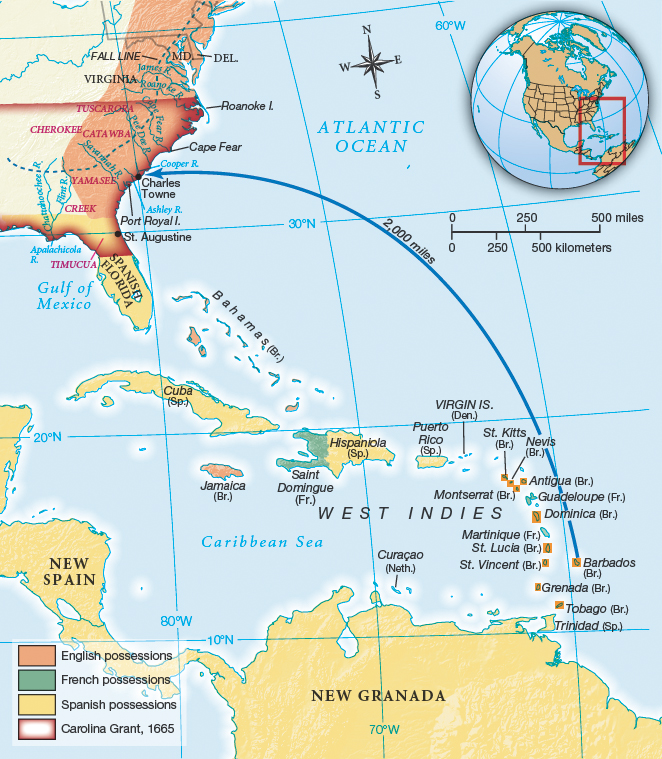The West Indies: Sugar and Slavery.
Printed Page 69 Chapter Chronology
The West Indies: Sugar and Slavery. The most profitable part of the English New World empire in the seventeenth century lay in the Caribbean (Map 3.2). The tiny island of Barbados, colonized in the 1630s, was the jewel of the English West Indies. During the 1640s, a colonial official proclaimed Barbados "the most flourishing Island in all those American parts, and I verily believe in all the world for the production of sugar." Sugar commanded high prices in England, and planters rushed to grow as much as they could. By midcentury, annual sugar exports from the English Caribbean totaled about 150,000 pounds; by 1700, exports reached nearly 50 million pounds.
Barbados
Colonized in the 1630s, this island in the British West Indies became an enormous sugar producer and a source of wealth for England. The island's African slaves quickly became a majority of the island's population despite the deadliness of their work.
Map Activity 2 for Chapter 3

Sugar transformed Barbados and other West Indian islands. Poor farmers could not afford the expensive machinery that extracted and refined sugarcane juice, but planters with enough capital to grow sugar got rich. By 1680, the wealthiest Barbadian sugar planters were, on average, four times richer than tobacco grandees in the Chesapeake. The sugar grandees differed from their Chesapeake counterparts in another crucial way: The average sugar baron in Barbados owned 115 slaves in 1680.

African slaves planted, cultivated, and harvested the sugarcane that made West Indian planters wealthy. Beginning in the 1640s, Barbadian planters purchased thousands of slaves to work their plantations, and the African population on the island mushroomed. During the 1650s, when blacks made up only 3 percent of the Chesapeake population, they had already become the majority in Barbados. By 1700, slaves constituted more than three-fourths of the island's population.
For slaves, work on a sugar plantation was a life sentence to brutal, unremitting labor. Slaves suffered high death rates. Since slave men outnumbered slave women two to one, few slaves could form families and have children. These grim realities meant that in Barbados and elsewhere in the West Indies, the slave population did not grow by natural reproduction. Instead, planters continually purchased enslaved Africans. Although sugar plantations did not gain a foothold in North America in the seventeenth century, the West Indies nonetheless exerted a powerful influence on the development of slavery in the mainland colonies.